Henna and Healthy Dogs
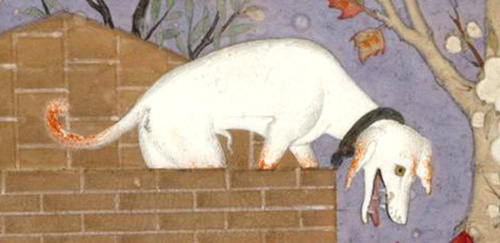 | Hennaed
Saluki from "Nighttime in a Palace," (1539 to 43, Iran) folio
attributed to Mir Sayyid 'Ali, Arthur M Sackler Museum, Harvard Museum,
1958.76. In the context of this Safavid image, favored pets were ornamented with henna at holidays; dogs were also hennaed for their health! Pure henna has anti-inflamatory, anti-fungal, and anti-bacterial actions on skin, and can relieve a number of minor skin irritations in dogs as well as other animals. |
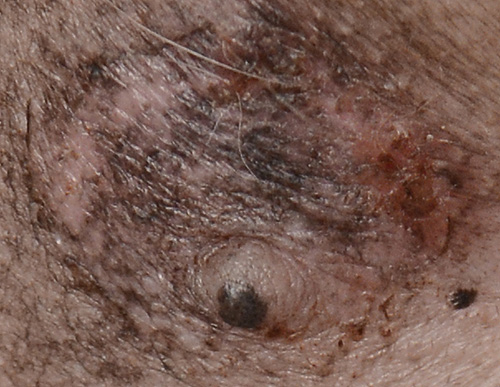 | 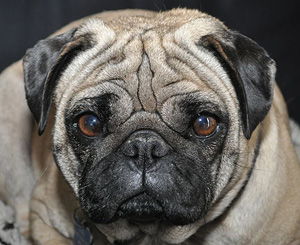 This
is my dog, Rumple. Every summer, in warm, moist weather, he
has an outbreak of ringworm, dermatophytosis, a parasitic fungus that
feeds on keratin found in skin and hair. It infests his belly and the
itching makes him miserable. At the left, you can see the typical
circular ringworm patch by a nipple; Rumple had been chewing at this
and several other ringworm outbreaks for days. |
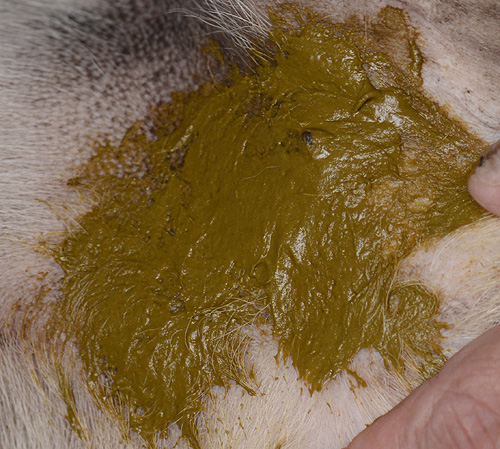 | I
smeared Ancient SunriseŽ henna paste onto Rumple's whole belly, to
cover all of the ringworm patches, and any that might be emerging.
Use
ONLY henna that has been independently tested to be 100% pure henna,
and to contain no PPD, additives, pesticides, lead, or adulterants!
Some of the chemicals used to adulterate henna can kill dogs!
Lawsone, the dye molecule in henna, is anti-fungal, and will penetrate the skin. Mix henna with a mildly acidic liquid, and let the paste rest overnight to release the lawsone. The ringworm fungus network extends underneath the skin beyond the visible ring. If you have a single patch to treat, smear henna paste at least 2" in diameter farther than the visible ring. I let the henna paste dry on Rumple's belly and left it for six hours. He immediately ceased chewing the itchy patches of ringworm, and did not show any signs of discomfort from the moment I massaged the henna onto his belly. |
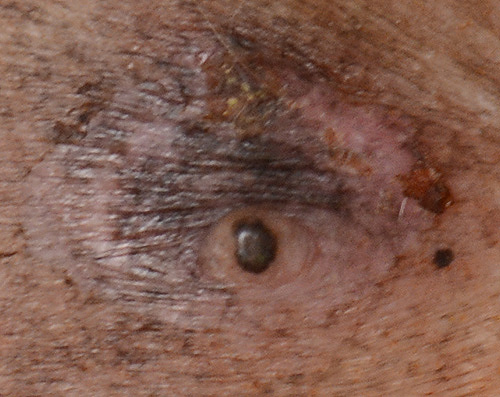 | After
six hours, I washed the dried henna paste off of Rumple's stomach. His
skin and hair was lightly stained orange. You can see that the
redness and inflammation improved rapidly. The black patches in the
skin also began to fade. |
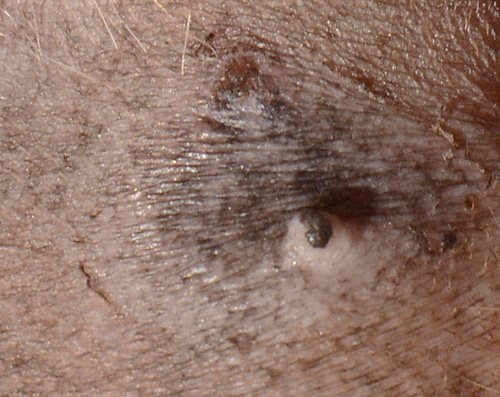 | After seven days,
the ringworm patch had faded significantly, and the belly skin became healthy
and more pink. Rumple did not lick the patch or give any other indication of experiencing discomfort. A single application is usually enough to wipe out the ringworm. If a new infection occurs after the stained skin has exfoliated, I reapply henna. Over the last seven years, I have regularly used henna on Rumple's ringworm and hot spots that bother him in summer weather. Pure henna has anti-inflamatory, anti-fungal, and anti-bacterial actions on skin, and relieves a number of minor skin irritations. |
| Detail
of henna on Saluki hunting copied from collected Works of Mir 'Ali
-shir Nava'i, plate 13, Folio 350, Verso, Bahram Gur Hunting with
Azada, late 15th century. This Saluki is hennaed in the same pattern as in the image, "Nighttime in a Palace" above. Dogs often have annoying invasive yeast infections in their ears and on their paws in damp, warm weather. Hennaing their ears and paws may keep them comfortable. Henna on the paws of hunting dogs also protects them when running on rough ground. Dogs whose paws have been hennaed are less likely to get inflamed cracks and cuts on their pads. Henna helps these skin injuries heal more quickly by reinforcing the skin's keratin and deterring invasive bacteria and yeasts. | 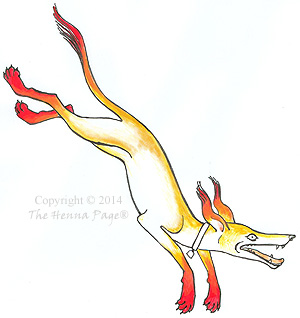 |
The Henna Page information is provided free to you by the support of TapDancing Lizard LLC site group and Mehandi.com.